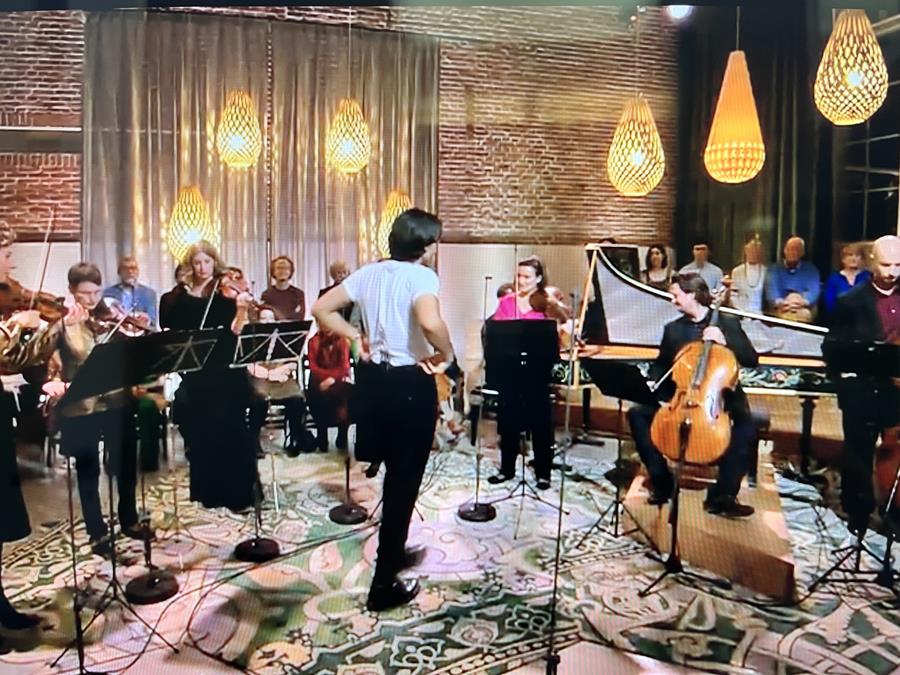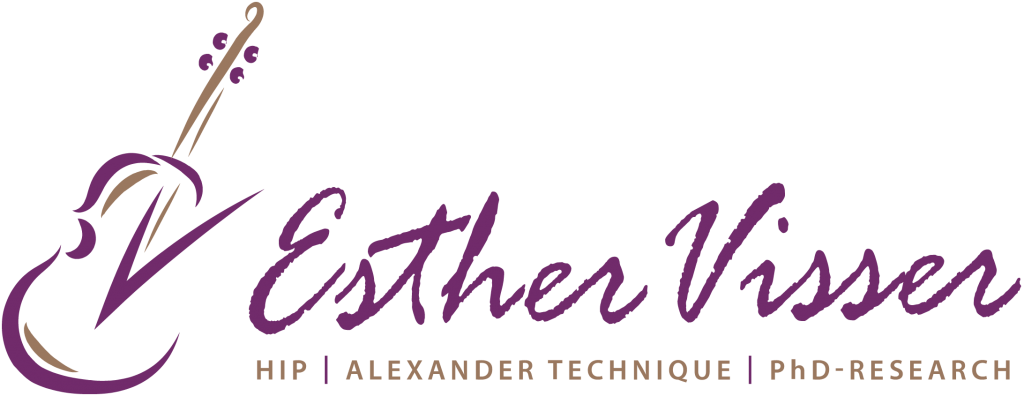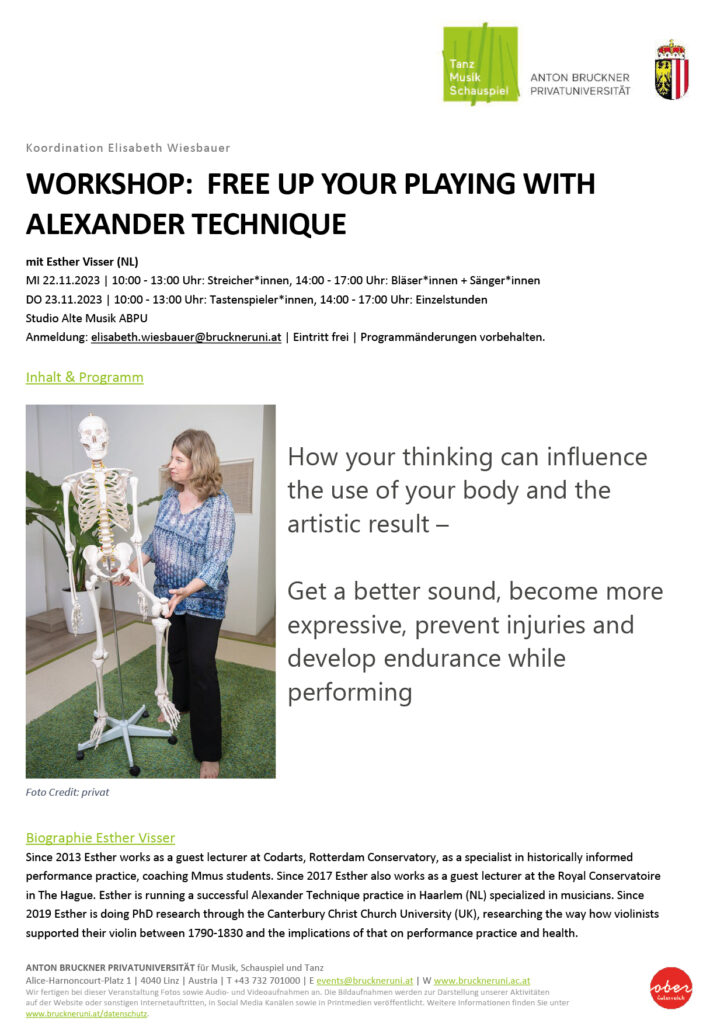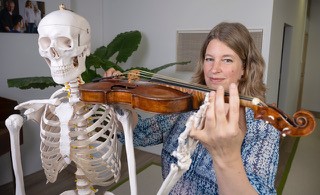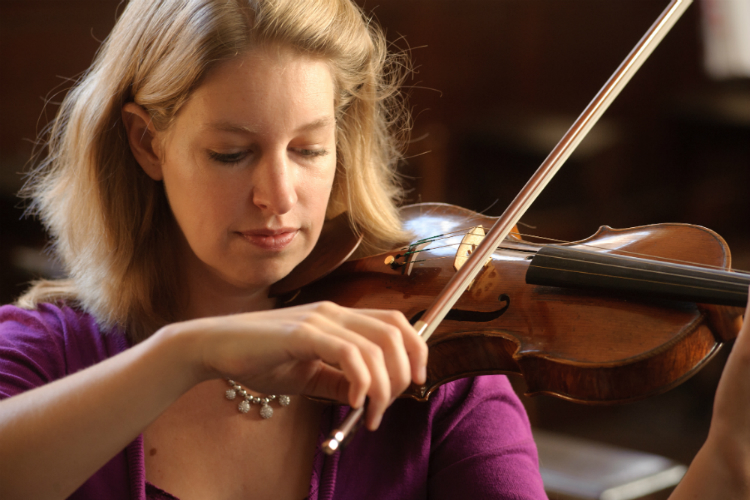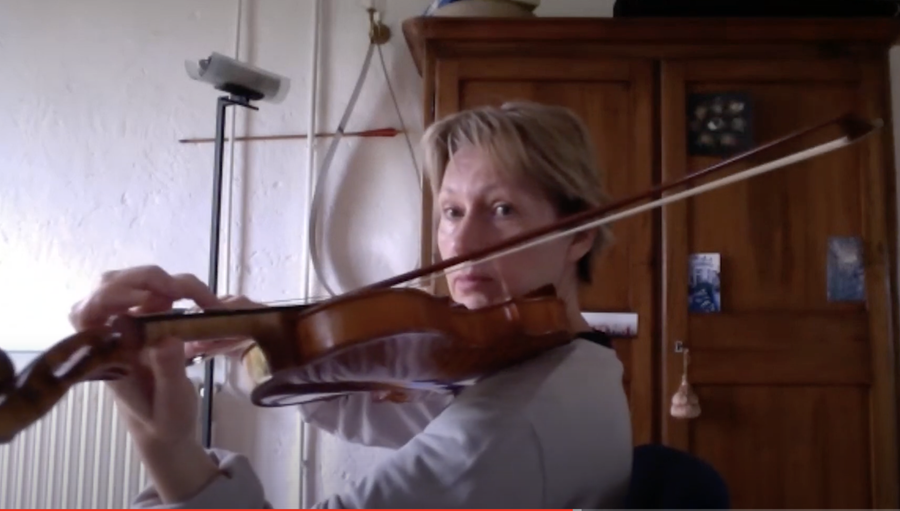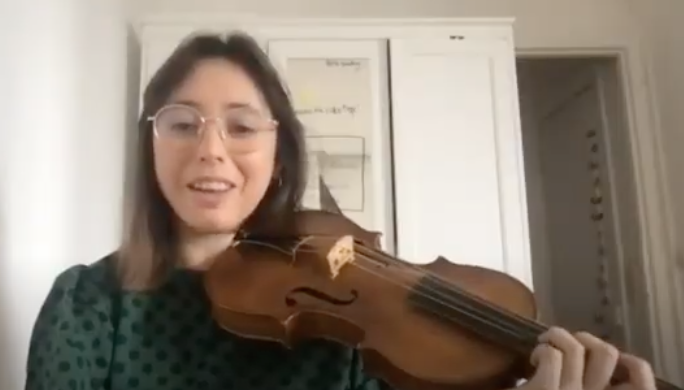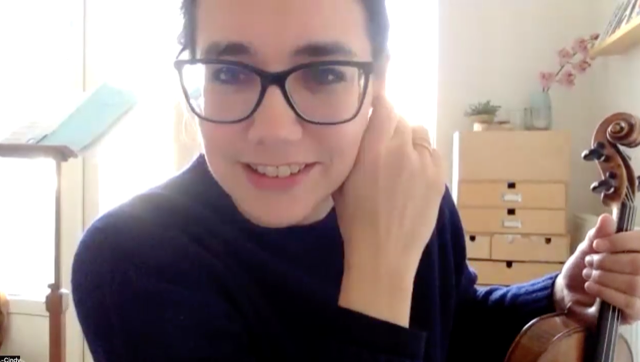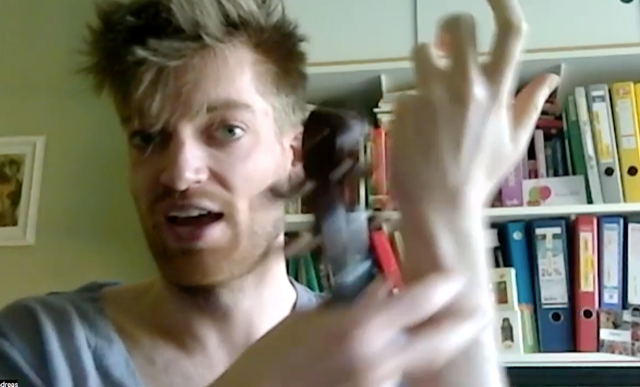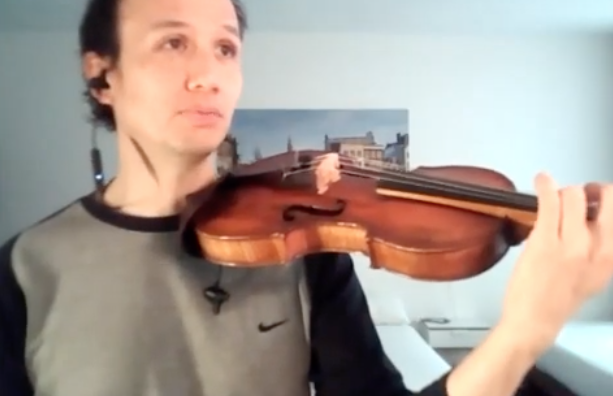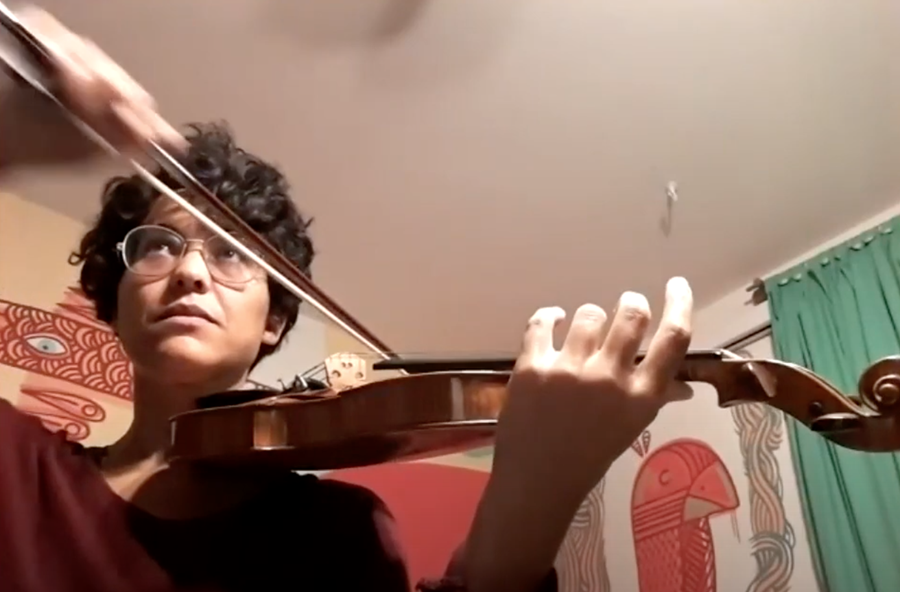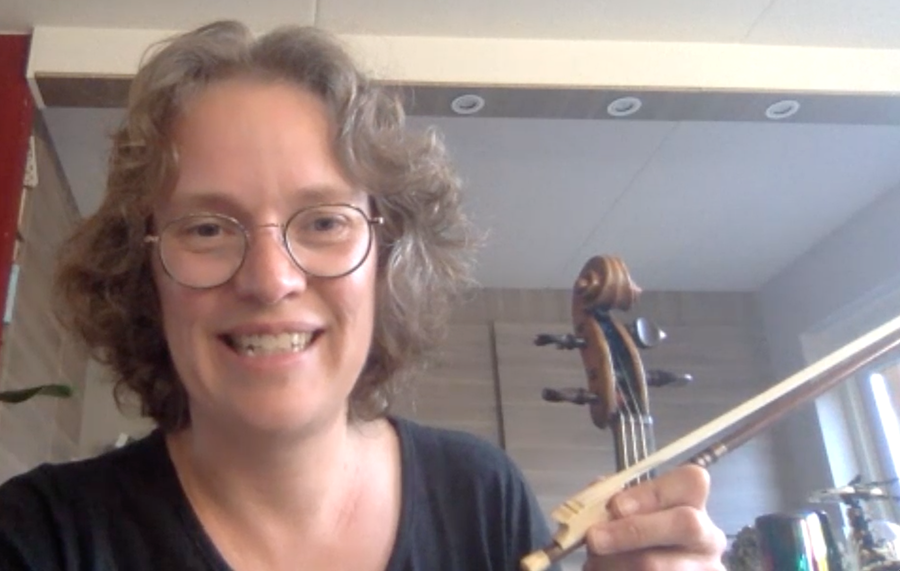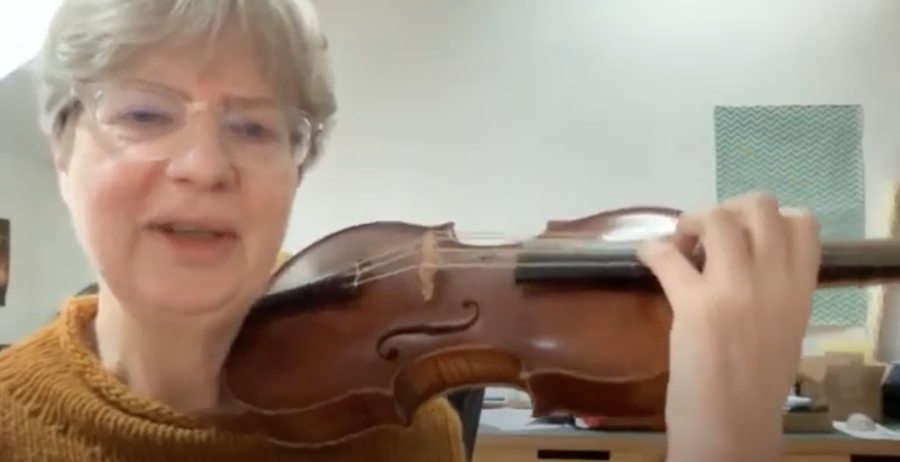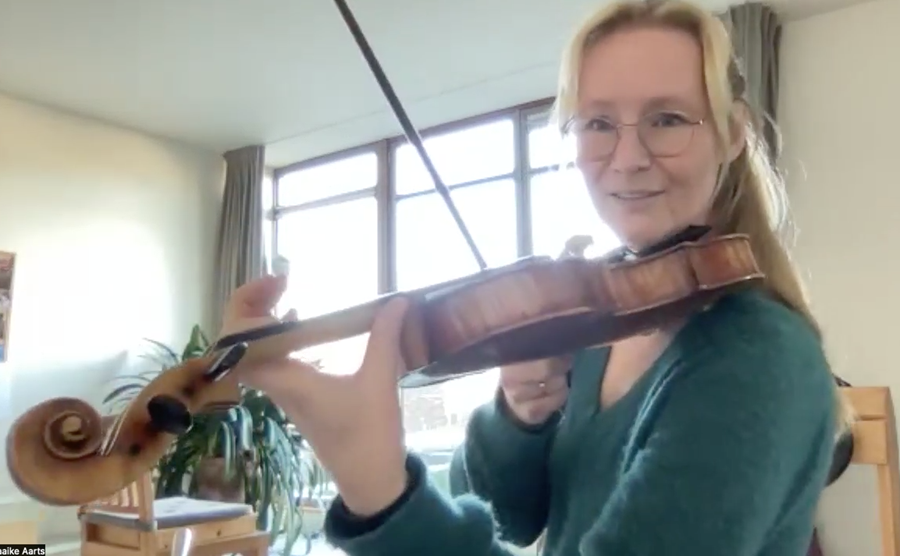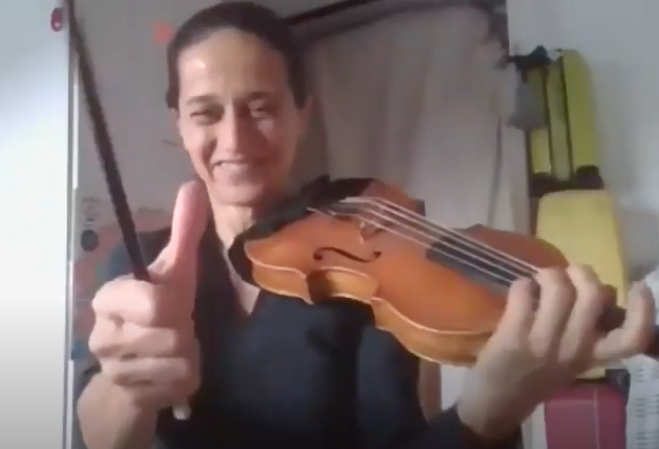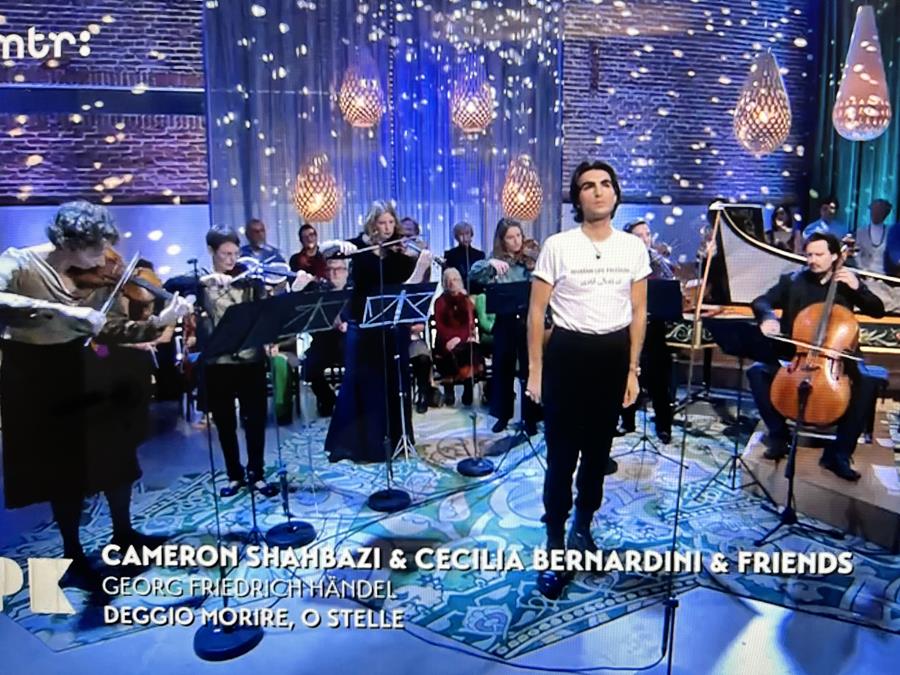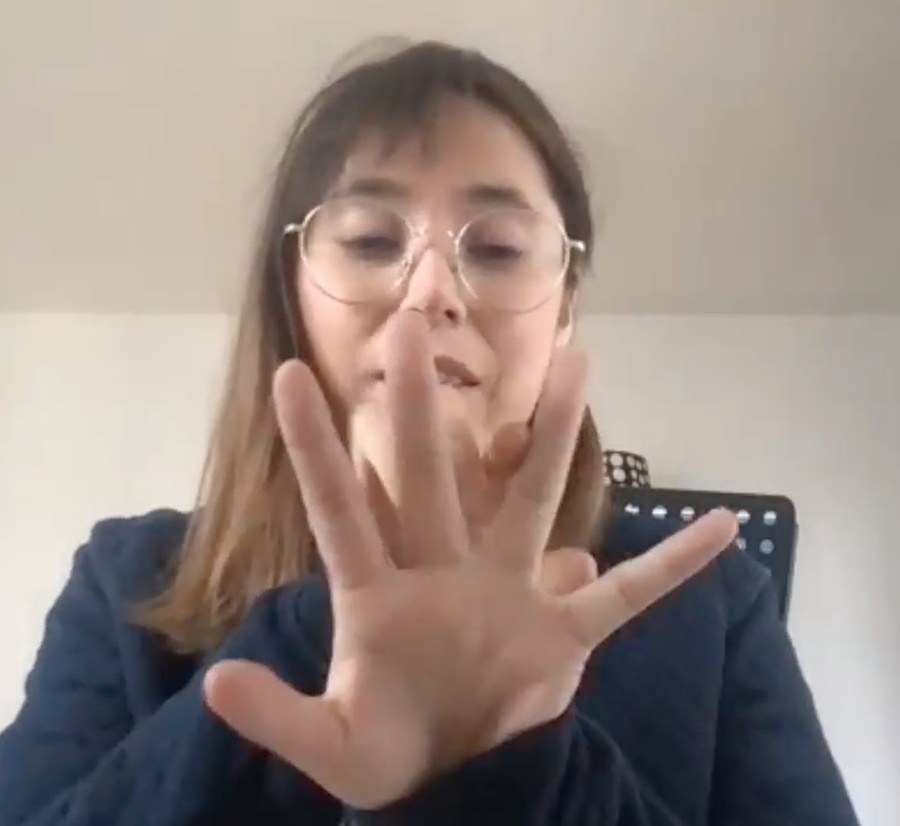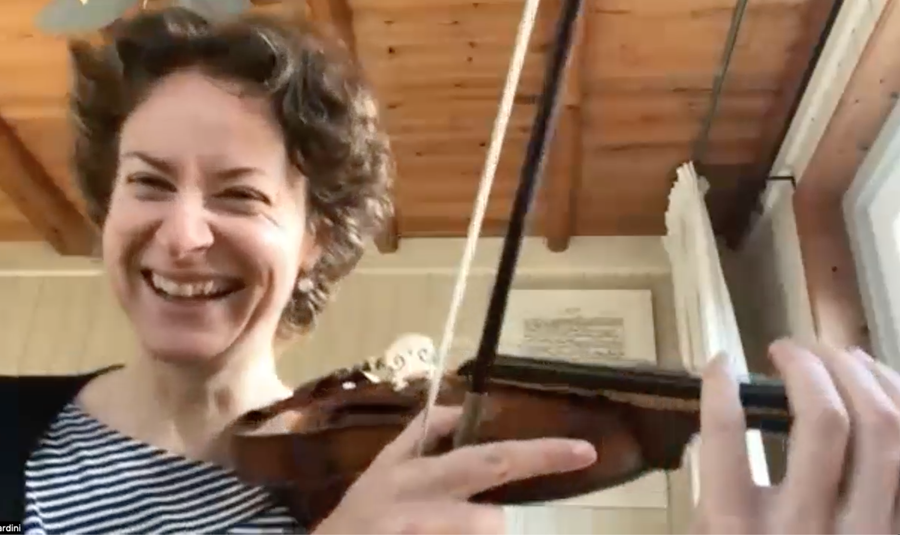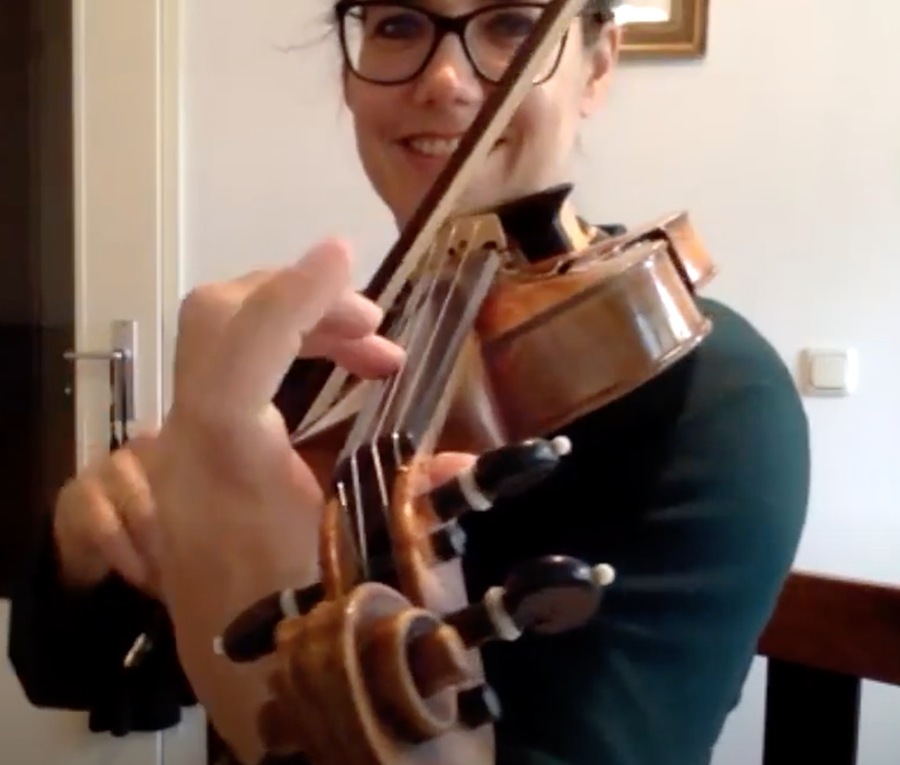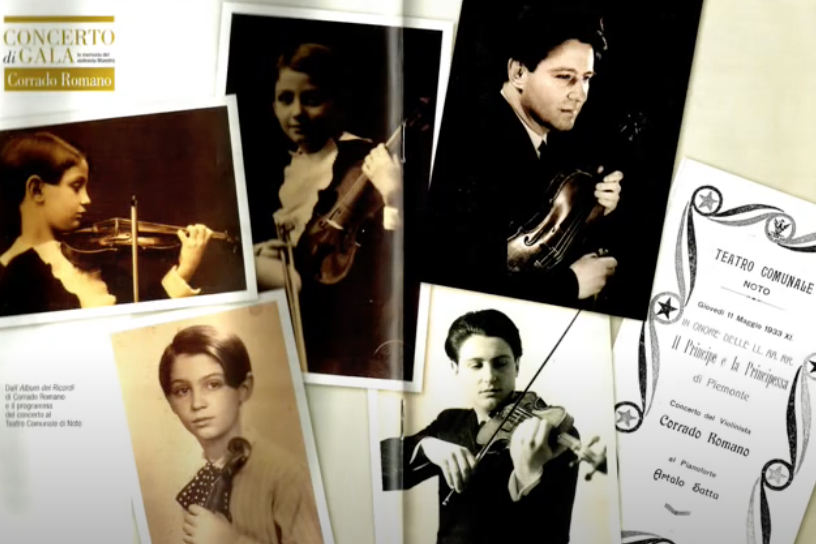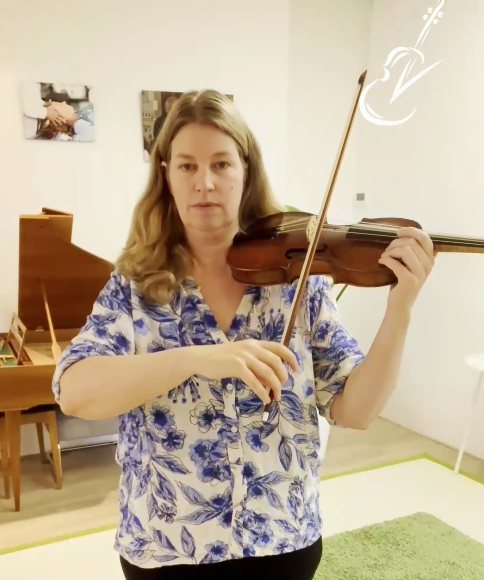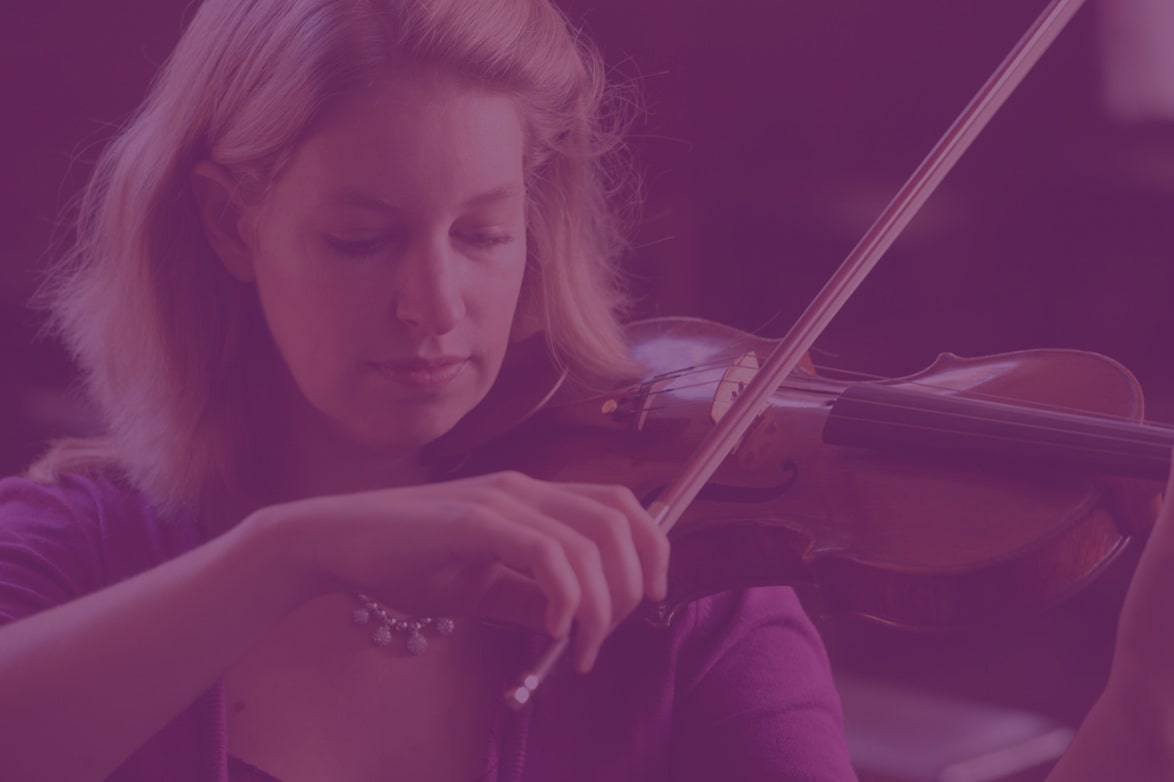
The ninth week of the experiment
Hi everyone,
This is the ninth week of my experiment on playing without a shoulder rest and / or chin rest. Here are some updates and some feedback.
If you are curious to see me (and a fellow participant in this experiment, Cecilia Bernardini) perform without using a shoulder rest and chin rest… here is a recording (5 minutes) from the Dutch television program where we performed last week.
Thank you for sending me your videos, it’s really important for my research. Please keep doing it. We are at different stages, not everyone is in week 9 now, that is completely fine. Everyone can do it in their own tempo.
Again, some more new participants joined as well, welcome to Andreas and Hedwig! Many people already filled out the entrance survey. Thanks. If you didn’t do it yet, please do so before you start the lessons.
If you know more people who like to join, for example starting in January, this is still possible through my website. If you missed the newsletter last week, you can still read it here. There is a collection of past newsletters at my website available too.
Please be welcome to join the Zoom session next Wednesday 11.00 AM (Dutch time) if you want… Just to meet or to ask some questions. Would be nice to meet up. You can watch Zoom sessions back on the login page where the video lessons are, as well.
About the Xmas holiday
It would be best if you could continue with the 10 min per day during the holiday, so your learning process will not have an interruption. But if you prefer to take a break, this is fine too, just please let me know, no problem! Our zoom sessions will continue tot take place, also on Wednesday December 28th and January 4th, and after that. Some people already informed me, that usually Wednesday mornings are not possible for them as they have to work, but in the holidays they are free and able to join! So this can be a nice chance to meet up if you are too busy otherwise. Looking forward!
“I think your research is very important and I think you are very right on all the points you raised. I am so thankful that your talk about this, because almost every musician has unhelpful habits.”
– Jun Keller, Vienna Philharmonic Orchestra,
participant in the experiment
Participant from the Vienna Philharmonic
As you see in the quote above, we have a participant in the experiment who plays in the Vienna Philharmonic. He is playing without using a shoulder rest since he was 22 years old and does some things in exactly the same way we are doing in our experiment, and some other things in a different way. He is happy to experiment together with us, discussing about the advantages and disadvantages, and trying it while playing in the orchestra. So very nice to have you on board, Jun, thank you so much for joining!
Ninth Zoom session
Last Wednesday we had an ninth zoom session with some participants of this experiment. It was lovely. If you want to watch it: I recorded the session and there is a link to it in the login page under the video lessons.
Nadi told us that she first developed some muscle pain this week as she changed an important old habit. She started to play Mozart concerto nr 1 in the ‘new’ way and she felt very free in the neck and shoulders. She started realising that before, she was turning in her left elbow inwards much too much (probably as a realist of that her teachers have been telling her before that she would have ‘small hands’ and she thought that this movement was needed, she said). But in this new way of supporting her violin, this is not needed anymore and she now can easily reach everything, also with the elbow just hanging towards the ground. She discovered this, as she was checking herself in the mirror. Great!
We also discussed about tuning: It’s perfectly possible to turn your pegs without touching the violin with your head… So many violinists and violists have the habit of squeezing the chin on the instrument while tuning…but why? Try it without! Otherwise you already start your practice (or concert!) with a lot of muscle tension.
We experimented with keeping the nose in the middle while performing Mozart. There was one spot where there is an open E string where Nadi felt unsafe with the nose in the middle and we discovered that she could use another finger to stabilise the violin while playing the open string. This felt much more secure. Then we experimented with what to see while performing (panoramic view), mind wandering, eyes in the back, etc.
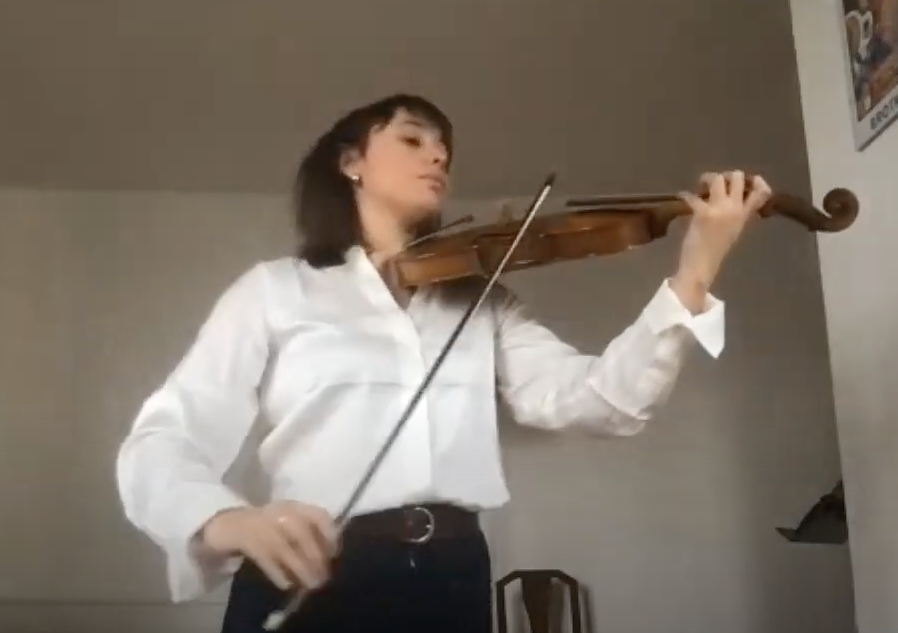
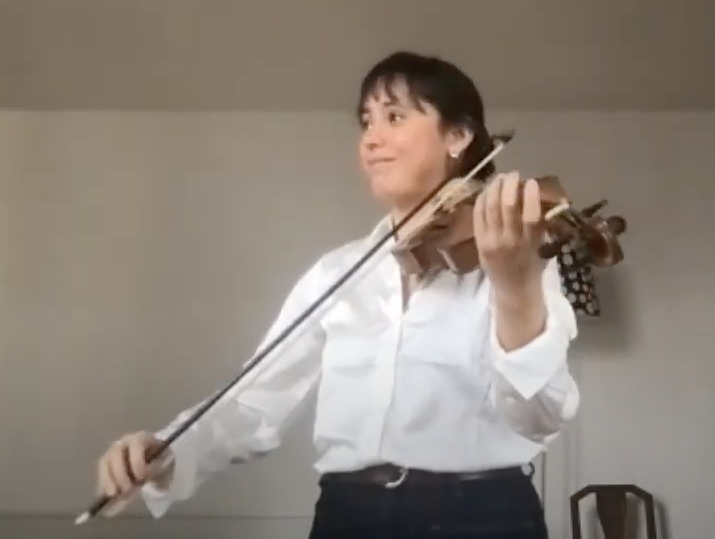
Attilio told us that he already tried applying everything in orchestra, but his muscles felt really tired and his body (shoulder especially) went back into old habits. So we decided that this is a bit too early… please do stick to 10 minutes per day. or a few times 10 minutes, but with your full attention. At this stage in the experiment, the orchestra still offers too much distraction and it’s better to wait a bit before applying it there. Great that he is so eager to apply it already, of course!
We then continued with Nadi playing Mozart, trying this new way of using her eyes and to be in contact with her surrounding… and she said “My mind and body do not recognise it yet, you know, it is totally new… but the feeling is like, freedom?”.
We spoke about how some teacher mention ‘imagining a string where you hang from. from the ceiling’, but I think this is not very helpful, as the whole body will try to push up, which creates tension. I much more prefer the idea of oppositions, which we use a lot in Alexander Technique. So yes, the head is going up from the spine (leaving the atlas), but from the top of the spine (between the ears) down, you imagine al weight going into the floor. In this case, one gets more length but also becomes more grounded at the same time.
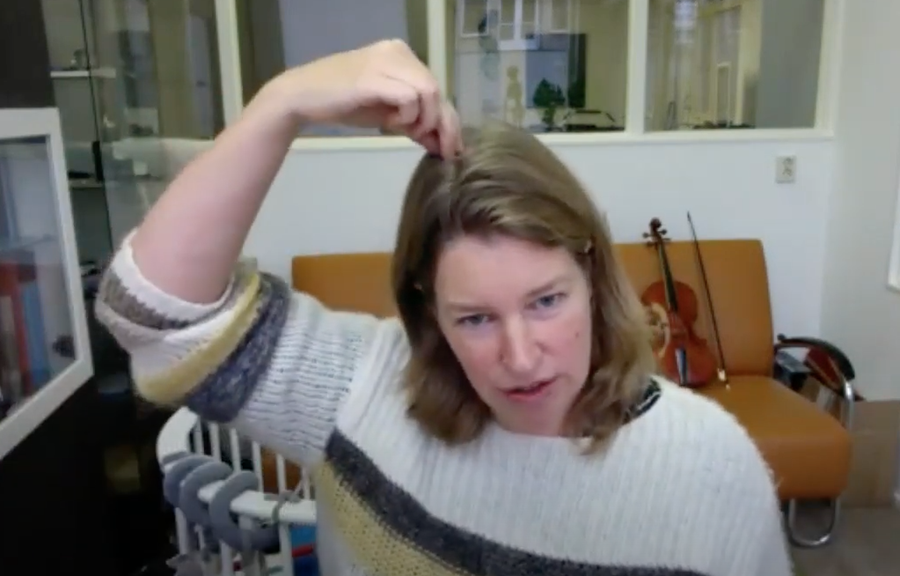
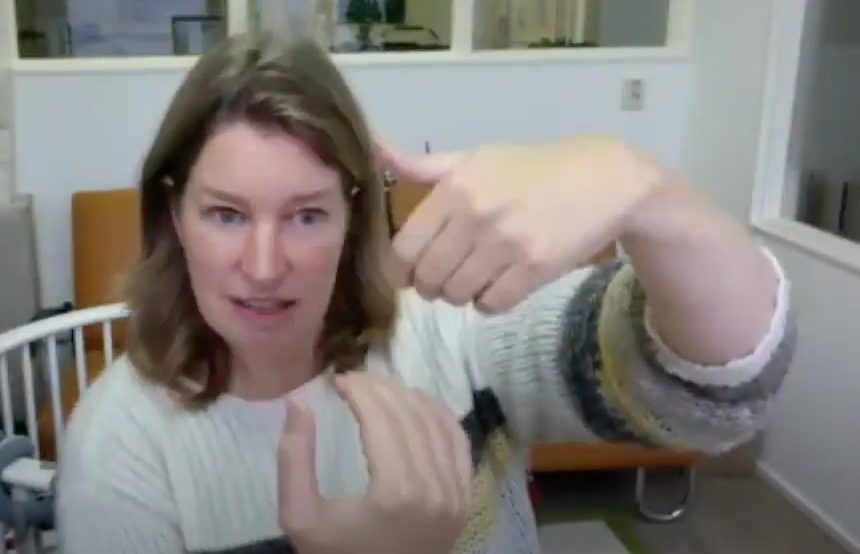
Nadi told us that she saw a video of herself from a few month before, when she still used the side of her hand to support the violin, and now she does it in totally another way, and she said she felt proud when she realized that. Nice to hear :-)…
Her question this week was about the intonation in the end of the glissandi (she is in lesson 5): How to avoid a change in pitch when taking the thumb back, for example after making a glissando with the first finger? We checked what was happening, and I saw that she didn’t move enough ‘under’ the neck of the violin with the base joint of her index finger while taking her thumb back. Perhaps this is important for everyone in this experiment: Please take care that there is enough support of the base joint of the index finger under the neck, but only in the small moment that you take your thumb back after changing positions. It’s less than a second. All other time we keep an open (soft) hand, not supporting the instrument at all with the side of the index finger. But do it enough during changing, others we start squeezing and the fingertip will change position and you will hear a change in the pitch! It worked well for Nadi, the problem was solved. Really good question, Nadi, thank you!
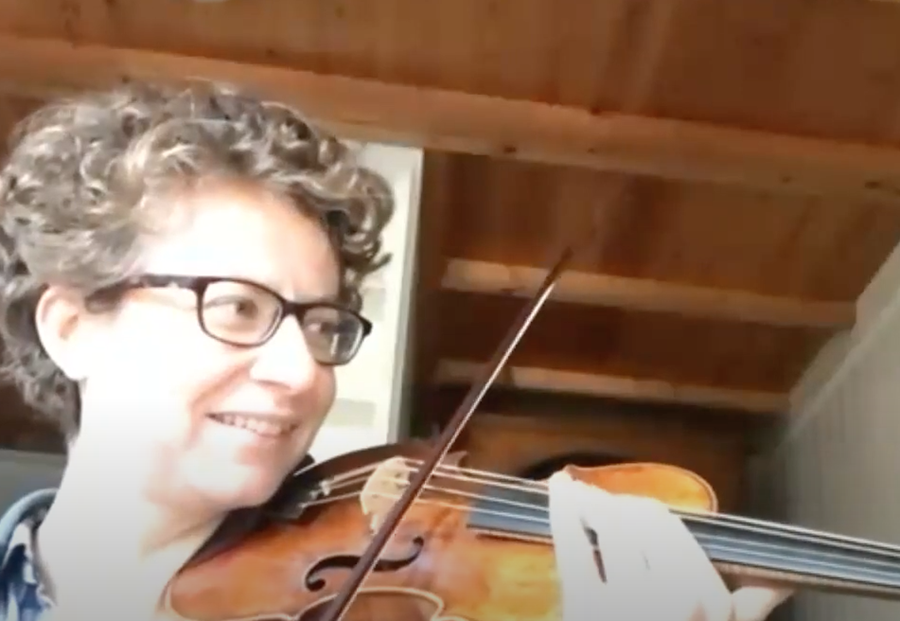
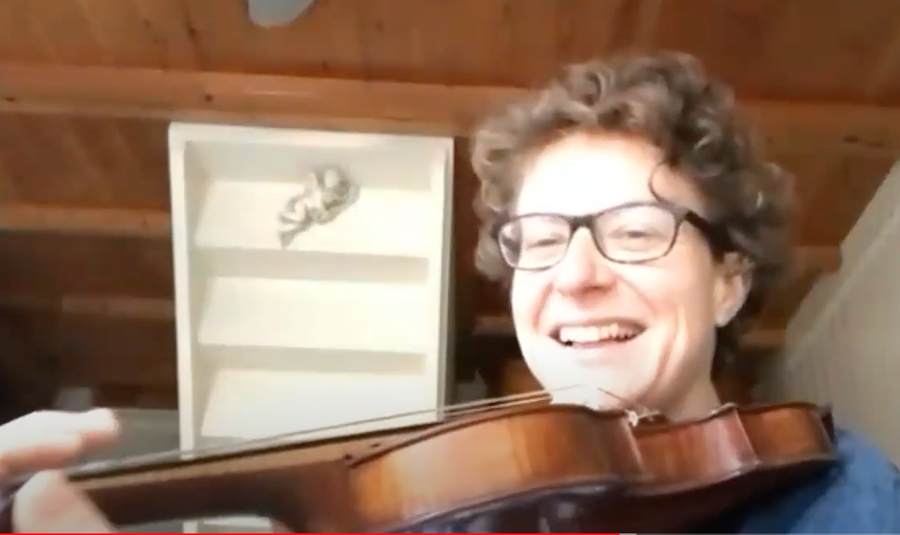
We then asked Cecilia to do the same and see how it is working for her. We discovered that she was making kind of two movements on the glissando back, in stead of one, which also was influencing the pitch a bit.
It was solved by making what we call in Holland a ‘centenbakje’, a kind of ‘asking for money’ gesture with the hand, which will bring the base joint of the index finger more horizontally under the neck of the violin. Ii’s not squeezing, it just another position of the hand for a short moment. Celilia had been a bit confused because we focussed so much on using an ‘open hand’ all the time (she was right!), but in the position change there is an exception for that, and there we use the side of the index finger for a short moment to support the instrument, so that the thumb can move back. You should be able to even leave the contact of the thumb with the neck completely without dropping the instrument. Try it! And after the thumb came back it is very important to open the hand again. So apart form shifting, we don’t use the side of the index finger for support.
Of course you don’t have to bring your thumb back immediately when you perform. Its also possible to play on for some notes with your thumb still somewhere around the third position place, and choose a moment for the change that is less obvious for the audience to hear (so not in a long note, for example), or during a rest.
We also spoke about it, that I am giving a lot of information, so Cecilia suggested to experiment with one subject per day, for example the panoramic view. And not to try everything at the same time… good idea!

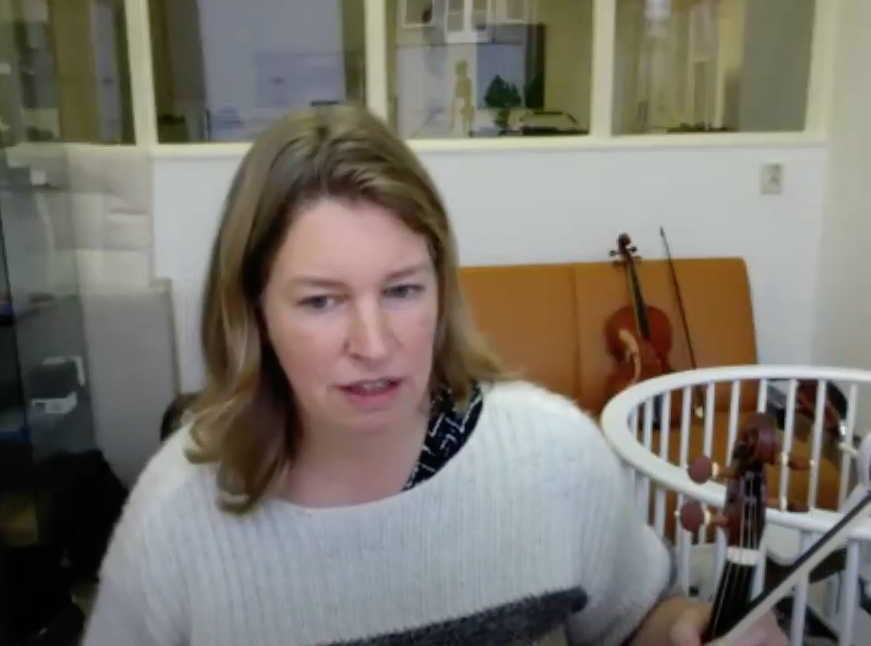
Attilio told us that since he started our experiment he is using two mirrors, to observe himself, and it is very helpful. This can be a nice suggestion. We spoke about the advantages and disadvantages of this…Alexander Technique works more from the inside out, starting with thinking, in stead of (visually) outside in, but of course FM Alexander himself was using mirrors himself. It can help to become more aware of what you are doing. Nadi also does it. Recording yourself on video for this experiment after every lesson can also serve as a mirror and give you feedback.
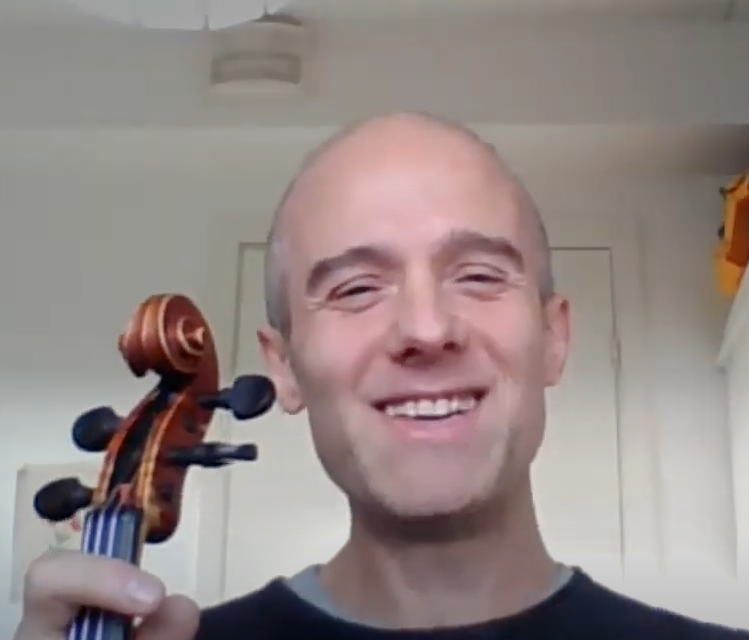
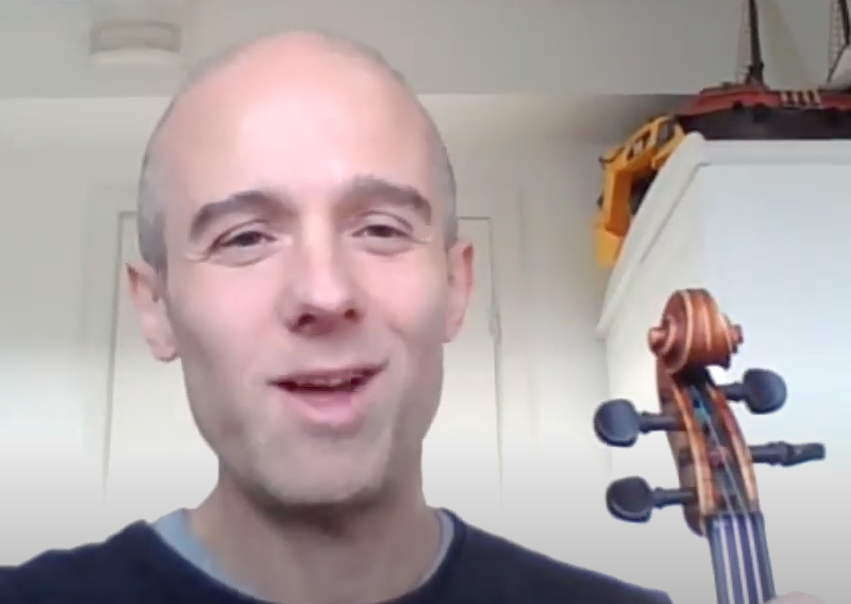
Some encouraging remarks for lesson 9
For those who are there already: In lesson 9 we are starting to apply the things we developed in previous lesson to playing the first 4 bars of Paganini Caprice nr 2. The most important thing is to stay aware what your left thumb is doing, are you still in contact with it? Can you use panoramic view, balance on your feet, thinking up, while playing these bars? In bar 2 and 4, we use the balance of a ‘support finger’ and the thumb while playing the other notes. In bar 1 and 3, the balance is divided between different fingers and the thumb. Please stop if your hand or arm or back gets tired. Ask the muscles that perhaps develop some tension if they can work less hard, to soften there. I would recommend to start playing it really slowly, so your mind can stay conscious of the contact of the thumb on the neck of the instrument. My hope is that it will feel easy!
Please take your time
It is important that everyone in this experiment enjoys the curiosity we have, and take part in a joyful and playful way. In that way, we learn the best. Don’t try too much to ‘do it right’…and don’t hurry. If you need more time, just let me know, keep me informed, and we take a bit longer. No problem!
Best regards, please let me know if you have questions,
Esther Visser
